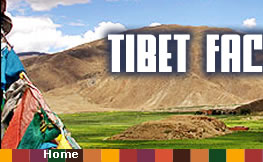|
Tibet boasts the largest primeval forests in China. In order to protect the ecological environment, the government strictly controls the logging scale and the annual commercial felling has been kept below 150,000 cubic meters. In the meanwhile, felling bases are required to restore forest vegetation in a timely manner. Jamda, Konjo and Mangkam counties in the upper reaches of the Yangtze River have implemented projects to protect natural forests, which cover a total area of 31,000 square km. In areas suffering from severe sandstorms and soil erosion, such as the upper reaches of the Jinshajing, Lancangjiang and Nujiang rivers and the 28 counties in the Yarlung Zangbo River valley, efforts have been made to return farmland to forest. It is planned that 52,000 hectares of farmlands and 53,000 hectares of barren hills should be reforested.
Afforestation has become a conscious action among the Tibetan people. Statistics show that over the past five decades, afforestation in Tibet has surpassed 70,000 hectares. The Tibetans have planted more than 90 million trees around their villages and houses and by the roads and ponds, in addition to some 1.5 million economic trees. In 2003, Tibet completed afforestation totaling 23,200 hectares, including 6,300 hectares of farmlands transformed back to forests. Some 7.2 million trees were planted voluntarily. In addition, seedling growth in nurseries totaled 326.33 hectares; slash regeneration, 1,900 hectares; and closed forests, 151,700 hectares.
Thanks to afforestation and effective protection of natural forests, forest coverage in Tibet has been on the rise, from less than 1 percent in the 1950s to the present 5.93 percent.
|





